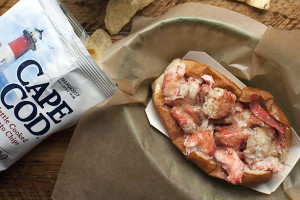The complicated calculus of eco-friendly dining
Persephone, the recently opened Michael Leviton restaurant in Fort Point Channel, puts its eco-friendly values at the center of its sales pitch. “None of our fish is from further away than the Chesapeake Bay,” the restaurant’s website reads, “and our beef, lamb, and veal all come from New England or Southern Canadian farms.”
I love to see this kind of commitment in a restaurant. It takes time and effort to piece together a local network of distributors, rather than simply ordering from a mega-distributor. And there are so many good reasons to do it: the quality and freshness of the product, the opportunity to support local farmers, the reduced environmental impact. Isn’t it better for the environment, after all, to buy ingredients from nearby farms, given that the makings of the average American dinner must be trucked about 1500 miles from their source to your table, according to a 2001 Iowa State University study?
Well, it’s not quite so simple, as an interesting story on CNN.com today points out.
According to a study by the UN’s Food and Agriculture Organization, producing food creates more greenhouse gas emissions than transporting it, thanks to the perils deforestation, fertilizers and pesticides, livestock raising, and energy-intensive refrigeration. When you look at the global environmental impact of the agriculture industry, the transportation sector is a mere bit player. So if you really want to lighten your dining footprint, you’ll need to think about how your food is raised, not just how far it had to travel to get to you.
That doesn’t diminish Leviton’s efforts at Persephone; it enhances them. Working with small farms allows Leviton to screen out “bad” producers and reward eco-friendly ones. Supporting local agriculture also means preserving open space in our congested Northeast corridor. And those practices really can make a difference.


